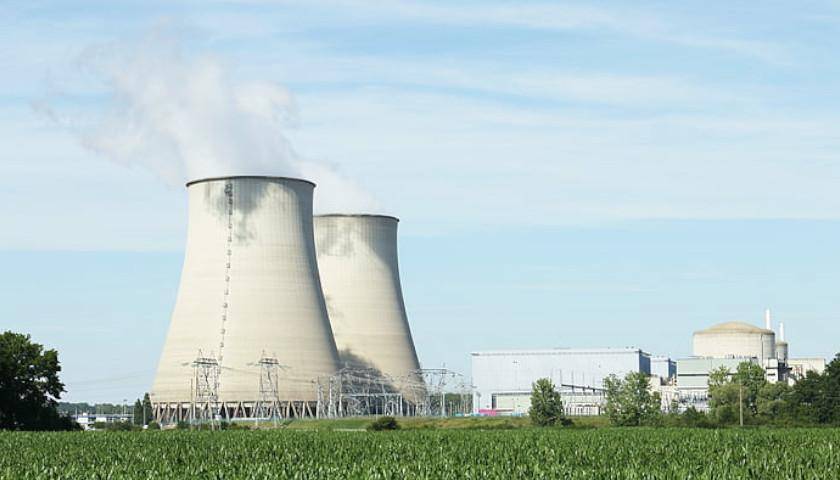by Edward Ring
If the delusional but dead serious demands coming out of the international climate crisis community are to be believed, and as documented in the earlier two segments of this report, achieving universal energy security in the world will require wind energy capacity to increase by a factor of 60, while solar capacity increases by a factor of 100. The mix between wind and solar can vary, of course, but the required overall increase is indisputable. As noted in Part One of this report, that would be a very best-case scenario, where extraordinary improvements in energy efficiency meant that total energy production worldwide would only have to increase to 1,000 exajoules per year, from an estimated 600 exajoules in 2022.
Finally, and as explained in Part Two, this is preposterous. Wind and solar energy cannot possibly increase in global capacity by a multiple of 50-100 times. It is utterly infeasible. As noted, “The uptick in mining, the land consumed, the expansion of transmission lines, the necessity for a staggering quantity of electricity storage assets to balance these intermittent sources, the vulnerability of wind and solar farms to weather events including deep freezes, tornadoes, and hail, and the stupefying task of doing it all over again every 20-30 years as the wind turbines, photovoltaic panels, and storage batteries reach the end of their useful lives—all of this suggests procuring 90+ percent of global energy from wind and solar energy is a fool’s errand.”
One may nonetheless argue that other forms of energy can supplement wind and solar in order to still fulfill the climate community’s goal to completely displace oil, natural gas, and coal. But what then, and in what proportions? Here are the alternatives:
Tripling nuclear power—which was resolved at COP 28—is an ambitious goal already. Going from 440 operating reactors worldwide to more than 1,300 will be an effort fraught with risk, not merely because of the impact of fuel sourcing, processing, and waste—all of which can be managed—but because of security considerations due to the dual use of the technology. And even tripling global nuclear power still only delivers a mere 3.1 percent of the target 1,000 exajoules.
As for hydroelectric power, to even suggest it might be doubled worldwide—again only to provide 2.9 percent of the target 1,000 exajoules—is a transgression of unspeakable magnitude. There are few topics that so thoroughly ignite both apoplexy and unanimity among environmentalists as the damming of a river. Expect the Chinese and the Indians to further develop their hydroelectric capacity, along with a handful of other nations powerful enough to be both indifferent to and immune from environmentalist pressure. It is possible that hydroelectric capacity might more than double worldwide by 2050, but even if it were to quadruple to generate over 60 exajoules, that would still only represent 6 percent of the target of 1,000 exajoules.
Other solutions carry with them consequences as well that limit their scalability. As it is, biofuel plantations consume nearly 500,000 square miles worldwide. While biofuel crops can yield co-products such as animal feed, this only reduces net land use by between 10 and 40 percent. That improves the equation, but the land required for biofuel nonetheless makes the consequences of even just doubling production problematic. And like all large-scale agriculture, biofuel also requires irrigation, fertilizer, pesticide, and herbicide. Claiming biofuel is “carbon neutral” is an obfuscating distraction from the fact that it is one of the highest-impact “renewables” of all. And even doubling production, as reflected on the chart, barely brings biofuel’s contribution to global energy production up to a paltry 1 percent of the 1,000 exajoule global target.
Much has been made of so-called “cellulosic ethanol,” a fitfully emerging technology that extracts ethanol from stems and branches of trees and crop residue. While this form of ethanol extraction is promising and may eventually become cost-effective, it raises an important question. How sustainable is it to remove all growth from forests and farmland year after year when, for millennia, the ashes and slash in forests and the plowed-under crops on farms would be left in place to decompose to restore soil nutrients? Cellulosic ethanol, should it become commercialized and used widely, may end up depleting and degrading arable land and forest ecosystems.
So-called “biomass” is already used to generate power and, indeed, in developing nations, is still a primary source of fuel for heating and cooking. More advanced systems have been built all over the world to generate “carbon-neutral” electricity—neutral, of course, because the carbon being released in the combustion is carbon that was relatively recently sequestered from the atmosphere when the plants were growing. But sustainable use of biomass—removing it and burning it only at the rate it grows in the forest or on farms—still raises the question of whether this deprives soil of natural replenishment.
As an aside, it might make compelling sense to burn the excess biomass that has been accumulating in California’s overgrown forests, and, presumably, anywhere else where similar conditions have developed. Nearly a century of fire suppression in America, combined with the regulatory diminishment of the logging industry over the past few decades, has turned many forests into tinderboxes. But once the excess is removed and burned in biomass power plants and a balance of logging and controlled burns is restored to forest management, ongoing biomass extraction from forests to feed power plants may do more harm than good.
Hydrogen has been hyped almost as a panacea to global energy challenges. But hydrogen is not without problems that may be insurmountable. To begin with, hydrogen is not a hydrocarbon. It’s just hydrogen, which is the lightest element in the universe. It is extremely difficult to store in large quantities because, as such a light gas, it has a very low energy density per volume. Storing compressed hydrogen in usable quantities, such as onboard a vehicle, requires a vessel capable of withstanding 10,000 pounds per square inch. By contrast, natural gas, a molecule with one carbon atom and four hydrogen atoms, has an energy so much higher that it can be stored in usable quantities at only 3000 pounds per square inch. In its natural state, natural gas only has one third as much energy per volume as hydrogen.
But hydrogen burns clean! No CO2 emissions!
That’s true, but hydrogen, just like electricity, is a manufactured energy that has to be produced using some other form of energy. The politically popular scheme is to use electrolysis to extract hydrogen gas from water, then pump the hydrogen into an onboard fuel tank, where it can be converted back into electricity by putting it through a fuel cell. Without describing the technology behind electrolysis or a fuel cell, suffice to say that only about 70 percent of the electrical energy going into electrolysis comes back out in the form of hydrogen, and then only about 70 percent of the hydrogen going into a fuel cell comes out in the form of electricity to power an EV motor. And then there’s the energy necessary to pump the hydrogen into that 10,000 PSI tank—another 10 percent. Hydrogen fuel for vehicles will never achieve an energy efficiency greater than around 45 percent (70% x 70% x 90% = 44%). So much for that 80 percent target.
Hydrogen is also a corrosive gas, meaning we cannot simply repurpose our existing natural gas pipeline grid to transport hydrogen gas. Everything would have to be rebuilt. At best, hydrogen displays interesting potential, but it’s no panacea.
Can humanity eventually overcome its reliance on fossil fuel? The answer to that is certainly yes in the very long run, but an emphatic no in the next 25 years. This is why the fossil fuel industry has proposed creative ways to keep operating. Carbon sequestration schemes, for which oil companies and thermal power generators are happy to collect government subsidies to implement, involve pumping CO2 emissions into underground caverns. Carbon offset schemes, also supported by fossil fuel interests, enable companies to continue to emit CO2 if they pay for projects such as, for example, reforestation, which reputedly “sequester” an equivalent amount of carbon in the form of growing trees.
History may judge harshly the efficacy of carbon sequestration and carbon offsets, judging them as useless apart from being avenues (ok, superhighways) for corrupt redirection of billions (oops, trillions) of dollars. Facing powerful adversaries committed to the annihilation of their industries, however, can explain why fossil fuel emitters have embraced these schemes. Why commit corporate suicide when you can collect subsidies? What would be undoubtedly most productive would be to continue improving practices that scrub emissions of all pollutants apart from CO2, harvest natural gas flares which otherwise are wasted fuel, and overall continue to make the process of extracting, refining, and burning fossil fuel as clean as possible.
Someday, it is possible fossil fuel will be a fuel of the past. Fusion energy has been 20 years away from commercialization for the last 50 years and is still at least 20 years away from commercialization. But if physicists ever do succeed in confining a star in a bottle, the dream of energy that is both abundant and inexhaustible will have been realized. There are other possibilities. Synfuel that is formulated by removing CO2 from fossil fuel emissions and combining it with hydrogen gas to produce a liquid transportation fuel with a high energy density is already feasible, although nowhere near commercialization. Geothermal energy is a wild card, possibly with the potential to put a major dent in achieving the overall energy production target. On the other hand, wave energy, heralded by its proponents as a promising renewable energy solution, would probably make an even bigger mess than wind turbines without making much of a difference.
The reality today is that coal, oil, and gas provided about 500 exajoules of energy in 2022, just over 80 percent of the roughly 600 exajoules of global energy production. To achieve universal energy security in the world, global energy production must increase to 1,000 exajoules at the very least. In 2022, wind and solar energy together produced 12.4 exajoules, a pittance. The reality is simple: to reach a reasonable target for worldwide energy production, we have to develop everything. An all-of-the-above energy strategy is the only feasible approach. Anything else is delusional at best.
It would be a mistake, oblivious to the unforeseen technological breakthroughs that define human history, to not be optimistic about the world’s energy future in the long run. But over the next 25 years, fossil fuel is going to be with us, and in the near term, its use will most likely increase rather than decrease. Our challenge is to use it as responsibly and efficiently as possible, not get rid of it.
– – –
Edward Ring is a senior fellow of the Center for American Greatness. He is also is a contributing editor and senior fellow with the California Policy Center, which he co-founded in 2013 and served as its first president. Ring is the author of Fixing California: Abundance, Pragmatism, Optimism (2021) and The Abundance Choice: Our Fight for More Water in California (2022).




